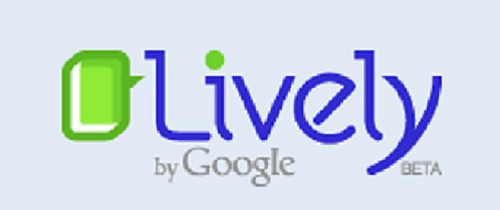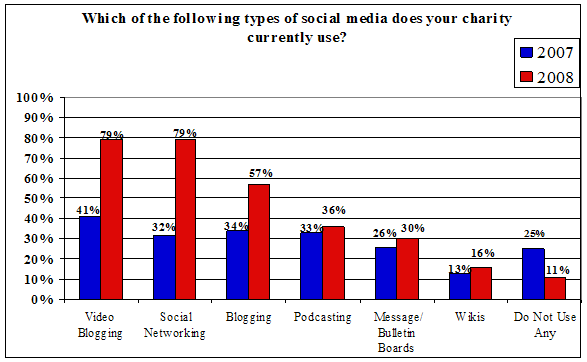I was chatting recently with Sam Decker, chief marketing officer at Bazaarvoice, about his company’s somewhat counterintuitive business. Its customers use Bazaarvoice to enable their customers to post product reviews and ratings right on their own websites.
![]() I asked why would a company invite visitors to publicly criticize its products this way. He told the story of one importer who sells a large and eclectic collection of overseas goods. Customer ratings revealed that about one third of its inventory of more than 600 products would never sell well because of aesthetics, utility or other reasons. The company used this feedback to quickly overhaul its inventory. Had it waited for customer objections to show up in sales figures, the process would have taken months longer.
I asked why would a company invite visitors to publicly criticize its products this way. He told the story of one importer who sells a large and eclectic collection of overseas goods. Customer ratings revealed that about one third of its inventory of more than 600 products would never sell well because of aesthetics, utility or other reasons. The company used this feedback to quickly overhaul its inventory. Had it waited for customer objections to show up in sales figures, the process would have taken months longer.
Fear of Failure
If you have ever worked for a large company, you know that failure isn’t considered a good thing. Losing products or business initiatives are usually killed off only after long and expensive efforts to save them. Powerful people stick with pet projects even in the face of overwhelming customer indifference. People who fail are reprimanded. People who fail repeatedly get fired.
Social media offers unprecedented ways to avert this syndrome, or at least to cut it short. By listening to customers, we can identify and fix shortcomings much earlier in the product lifecycle. By engaging in continuous dialogue, we are more likely to hit the market head on with new products. If we don’t let failure become some kind of referendum on our self-worth, then we are much freer to experiment.
I look at Google as being the most visible practitioner of the philosophy. Spend a little time with the company’s line of applications and you’ll soon discover its amusing portfolio of error messages. “Whoa! Google Chrome just crashed!” says one. Another moans “We know this is lame, but consider that Gmail didn’t even have folders in its first version.” Google is a company that doesn’t mind admitting its shortcomings because it knows customers would rather see that it working to get things right than pretending that everything’s okay when it clearly isn’t.
 Google also isn’t afraid to cut its losses. The company has shut down more than a half-dozen products and services in the last year, including Lively, it’s virtual world (left). It has also closed a couple of high-profile business ventures. Google makes no attempt to hide these business decisions but rather explains its reasoning on employee blogs. That’s because Google sees itself as an innovator, and innovative companies don’t mind getting things wrong now and then. In fact, a company that doesn’t make mistakes isn’t trying hard enough.
Google also isn’t afraid to cut its losses. The company has shut down more than a half-dozen products and services in the last year, including Lively, it’s virtual world (left). It has also closed a couple of high-profile business ventures. Google makes no attempt to hide these business decisions but rather explains its reasoning on employee blogs. That’s because Google sees itself as an innovator, and innovative companies don’t mind getting things wrong now and then. In fact, a company that doesn’t make mistakes isn’t trying hard enough.
Shoot the Losers
Unfortunately, few corporate cultures are confident enough to work this way. One of the most common questions I am still asked by audiences is how to avoid negativity in social media. My honest answer is why would you want to avoid it? The faster you correct problems, the less damage is done. It might have been possible to ignore mistakes a few years ago, but that’s no longer an option. We can talk with our customers about our shortcomings or they will simply talk amongst themselves. Which would you rather do?
It’s often been said that the reason Silicon Valley became such a foundry of technology innovation is that the culture accepts and even celebrates failure as a consequence of risk-taking. In today’s media landscape, failure is no longer a private matter. Social media tools enable us to minimize the risks and consequences of our mistakes if we simply own up to them. It turns out that’s not nearly as difficult as we used to think it was.


 For just a few dollars, you can select from a wide range of templates, upload your copy and images and publish for yourself, your friends or the entire world. Lulu publishes on demand, which means you don’t have to maintain a garage full of bound copies. It’s a little more expensive than keeping an inventory, but you can’t beat the flexibility. There’s also less chance of hard-coding errors into thousands of copies.
For just a few dollars, you can select from a wide range of templates, upload your copy and images and publish for yourself, your friends or the entire world. Lulu publishes on demand, which means you don’t have to maintain a garage full of bound copies. It’s a little more expensive than keeping an inventory, but you can’t beat the flexibility. There’s also less chance of hard-coding errors into thousands of copies. Over the last couple of years, Lulu has added an impressive range of publishing, marketing and distribution services. For example, a custom cover design can be had for as little as $80 and professional copyediting and design services are relatively cheap. The availability of high quality offshore resources has been a big factor there.
Over the last couple of years, Lulu has added an impressive range of publishing, marketing and distribution services. For example, a custom cover design can be had for as little as $80 and professional copyediting and design services are relatively cheap. The availability of high quality offshore resources has been a big factor there. There’s also the advantage of time. Boston Globe columnist Scott Kirsner has published two books using CreateSpace, which is run by Amazon. For his latest book,
There’s also the advantage of time. Boston Globe columnist Scott Kirsner has published two books using CreateSpace, which is run by Amazon. For his latest book,  Dave Balter knows a thing or two about brand advocacy, and his experience may turn some of your assumptions about brand relationships on their head.
Dave Balter knows a thing or two about brand advocacy, and his experience may turn some of your assumptions about brand relationships on their head. If you’ve signed up for more than a couple of social networks, you’ve undoubtedly experienced the syndrome of seeing your mailbox clutter up each morning with notifications about messages, invitations or comments you’ve received from other members. This deluge can become so annoying that you may simply choose to relegate many of these notices to the black hole of your spam filter.
If you’ve signed up for more than a couple of social networks, you’ve undoubtedly experienced the syndrome of seeing your mailbox clutter up each morning with notifications about messages, invitations or comments you’ve received from other members. This deluge can become so annoying that you may simply choose to relegate many of these notices to the black hole of your spam filter. In the socialized future, people’s identities will travel with them and their details shared selectively with others within their social network. Profiles will develop incredible richness as details of each person’s preferences, connections, memberships and activities are centralized. It will probably be a year or two before this concept begins to take shape. Regardless of whether Facebook or Google wins the standards war, the social network metaphor will become ubiquitous.
In the socialized future, people’s identities will travel with them and their details shared selectively with others within their social network. Profiles will develop incredible richness as details of each person’s preferences, connections, memberships and activities are centralized. It will probably be a year or two before this concept begins to take shape. Regardless of whether Facebook or Google wins the standards war, the social network metaphor will become ubiquitous. Like any social network, LinkedIn has personal profiles, groups, and the concept of “friends,” which it calls “connections.” Its most distinctive feature is based on these connections: a six-degrees-of-separation structure that enables members to connect to people they don’t necessarily know through intermediaries within their trusted circle. It’s the online equivalent of arranging an introduction.
Like any social network, LinkedIn has personal profiles, groups, and the concept of “friends,” which it calls “connections.” Its most distinctive feature is based on these connections: a six-degrees-of-separation structure that enables members to connect to people they don’t necessarily know through intermediaries within their trusted circle. It’s the online equivalent of arranging an introduction. Over the past two years, Facebook has raced ahead of its predecessor,
Over the past two years, Facebook has raced ahead of its predecessor, 
